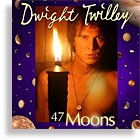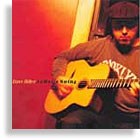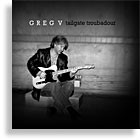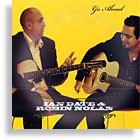 “I’ve never heard anybody come up and tell me that the music I’m playing don’t feel good,” says Taj Mahal. And it’s hard to imagine he ever will.
“I’ve never heard anybody come up and tell me that the music I’m playing don’t feel good,” says Taj Mahal. And it’s hard to imagine he ever will.
Whether he’s performing solo, fronting a cooking R&B outfit, or leading his Hula Blues band, Taj Mahal proves that the blues is more than three chords and is far from depressing. And at 62, his energy hasn’t diminished a watt, in conversation or onstage.
Of course, as solid as Taj’s blues credentials are, he’s much more than that. Even though his highly recommended memoir is titled Taj Mahal: Autobiography Of A Bluesman, you’d be hard-pressed to name an artist who is so completely at home in so many genres – and on so many instruments. In addition to guitar (both electric and acoustic, both slide and standard), Mahal is proficient on harmonica, piano, clawhammer banjo, upright bass, mandolin, and ukulele, and his arsenal of instruments is always expanding, along with his range of styles – all immediately and indelibly stamped with his signature.
The son of a North Carolinian mother and a jazz pianist/arranger father of Caribbean descent, Taj grew up in New York City and Springfield, Massachusetts, and went to the University of Massachusetts in Amherst during the early-’60s folk boom. After moving to Los Angeles, he entered the Topanga Canyon Banjo & Fiddle Contest, where his bluesy clawhammer banjo style was such a contrast to reigning champion David Lindley’s flamenco-inspired excursions, the judges declared a tie. (Like Lindley, Taj was eventually asked to move from contestant to judge after several wins. One player he bested was future comic star Steve Martin.)
In the midst of the mid-’60s Blues Revival, Taj formed the Rising Sons with Ry Cooder, and the group signed to Columbia. They didn’t jell with Terry Melcher, who was assigned to produce them, and their intended debut album was shelved. But Taj regrouped and recorded a self-titled 1968 debut that was startling for its maturity and authority, and remains a classic (featuring Cooder, Mahal, and Jesse Ed Davis on guitars). Far from a sophomore jinx, he followed with Natch’l Blues that same year, and the following year released a two-album package: Giant Step/De Ole Folks At Home – one disc featuring the electric band; the other, Taj solo and unplugged, his fingerpicking showing the influence of Mississippi John Hurt and Rev. Gary Davis.
Over the years, Taj’s recorded output has been impressive in terms of quality, substance, and sheer amount – with some three-dozen albums, in addition to soundtracks (like his classic picking and composing for 1973’s Sounder), children’s albums, several retrospectives, and barrier-breaking collaborations (like Mumtaz Mahal with Indian slide guitarist Vishwa Mohan Bhatt). His most recent release is last year’s Hanapepe Dream, with his Hula Blues aggregation.
Taj Mahal is definitely not a musician who is only able to speak through his instrument. An interview with him is educational, thought-provoking, funny, and, like his all-encompassing approach to music, covers a lot of territory. It’s not every day one has the opportunity to talk to someone who is both an American treasure and a true World Citizen.
Vintage Guitar: When you go in what is perceived as a different direction, do you see it as a radical change, or are they all parts of one big thing?
Taj Mahal: No, it’s music, man. I think what’s happened is that people are taught to see things not from the whole but from “the specific part that they really want.” Here we are, claiming to be the big free place on the planet, and if you give people anything more than two, “I’m just having such a problem with this whole thing; I really don’t know what to do!” For Christ’s sake, how much time do you think you have in this life to be an ***hole (laughs)? Not a hell of a lot, man.
All I’m trying to do is not be a bored guy. I hear these guys sometimes playing the same old malarkey over and over, and they come off stage and look at you and say, “Well, you know how it is; you gotta keep this front up.” I don’t have to keep up no damn front. Either you like the music that I’m playing, or go buy somebody else. Yes, I would like to sell more records, but the real fact of it is I wake up every day and I’m not unhappy with what it is that I’ve done or that I’m going to do. I don’t have to run my Maserati off a cliff to get in the papers. Now, I don’t own one, either (laughs).
What always bothered me about the whole music scene was how separated everything was. I wondered why, after all these years of this great sound, everybody was shifting away from something that sounded so good. In my case, I think a lot of it is, I’m a creole blend of black and Native American southerners on my mother’s side and black and Caribbean people on my father’s side. When I was growing up, people were looking outside of America for some sort of sustenance. If you sang opera or played classical music or painted like Chagal, getting up into society, then things were really happening. At the same time, they comfortably overlooked the beauty and depth in what I call deep Americana. Real beautiful music coming from people who could only sing it the way they did it. It just attested to their ability to survive from day to day.
When you see kids in the city with everything to live for, and yet they’re suicidal, you go, “Well, how did those guys do that 100 years ago, with slavery and lynching and all kinds of craziness going on?” When you listen to the music that was recorded during that time, these kids don’t have any idea what it’s really like to do anything. They’ve just got too much time on their hands, and they’re easily swayed by any kind of input that might have some negative, mysterious direction.
The blues was like a living thing for me. It wasn’t something that was recorded back a long time ago that I didn’t hear anything about; it was like people walking in the street. People didn’t necessarily express themselves in the same kind of blues as I was hearing, but it certainly was the same kind of sentiment. Everybody seemed to be trying to work at something that was heartfelt. I just didn’t buy the popular music as the way to go. I can’t really put my finger on why, other than I just know what I felt. And I didn’t understand why there was all this good stuff, and the baby and the bath water were being thrown out. On the other side of the whole thing, music is like the first language of humans on this planet. There’s nowhere you can go where you don’t hear it, where people aren’t playing it, people aren’t listening to it. There’s a million ways to look at it, but for me I just like communicating a style of music that can work with other styles.
Did you have any guitar teachers?
The first person I ever heard play some serious stuff near me was my next-door neighbor, Lynwood Perry, who came from outside Durham, North Carolina. He was about six months older than me. I tried for 35 or 40 years to get people to go up and interview this man, and they never did, and now he’s dead, unfortunately. This guy was the classic stuff.
It’s hard for a lot of people to understand, but I wasn’t really impressed when I first heard Robert Johnson. “What the hell are these guys hearing in this guy?” Not that I didn’t like what he was doing, but it sounded so thin – why would you be digging further and further into this when there are lots of people who were around and were alive and playing? All the stuff they were trying to squeeze out of those Robert Johnson records, Lyn was playing live next to me. I learned almost everything I knew about guitar playing from him. I didn’t take any lessons; I didn’t sit down and learn the chords; he just was an incredible player. This is when I was 12 to 15, around there. Of course, my mom had a fit, because I was following behind this country bumpkin. Yep. Gone. Bye. I mean, we were literally like outcasts in that town. “What are you doing hanging around with him?” He wasn’t a dope dealer; he wasn’t stealing cars; he wasn’t ripping off anybody; he just played real good guitar and had lots of girlfriends.
I would listen to the crystal radio set late at night, and the blues would come over. It was just deep in your bones. Everything else, I couldn’t understand why it was cool. But most of it was arranged, and arranged for effects – popular music. The other stuff was just soulful. You could feel the life in one, and the other one just felt lifeless. I’d wonder why, even when they played the right notes, it just didn’t get it.
Up the other end of the street were these guys from Clarksdale, Mississippi – and actually they were from Stovall, Mississippi, where Muddy Waters and those guys were on that plantation. Whatever this is – divine providence or whatever you want to call it – I was one lucky guy. To be sandwiched between that kind of energy, and not be some kind of sophisticated snob that didn’t see the value of it. It was what my Caribbean grandmother called “original Joe” – somebody who under any circumstance could triumph and was always innovative. Every time I saw people who exhibited that, I’d ask, “How did you do that?” People ask me, “Where do you get your inspiration?” Well, it’s a big world out here, and a long time ago, before most people settled on less than mediocrity, I just said, “This is a growing, living experience.”
When you were in college in Amherst, it seems you couldn’t have gone at a better time.
Yeah. The college was small at that time; there was only about 5,000 people on campus. And the whole folk scene was popping off, and kids were showing up to school with guitars. A lot of us knew a lot of songs. People like Harry Belafonte did an awful lot to give me an entre into communicating with other musicians who liked that kind of music – because it had gotten popular. I had a direct connection to that; it would be blues, ballads and calypsos. People weren’t afraid to mix it up and be entertainers, as opposed to just one-note hooeys.
In an era when a lot of stuff was hampering people getting together and getting along, we were in an educated environment, being inspired and bombarded by people who were getting a lot closer to what they felt were their roots. When I saw young white musicians learning how to play banjo, doing all this mountain music and country music, I thought, “Oh yeah! You’re studying nuclear physics on this side, and playing clawhammer banjo, wearing bib overalls. What’s up?” Another example of covering on the organic level, covering on the intellectual level, and keeping your options open.
I was playing with Lyn, and still listening to Bo Diddley and Muddy Waters and Chuck Berry, then all of sudden along comes this folk music and hootenannies and stuff. I said, “Well, these guys are going for the real value of music.” They’re getting themselves intellectually prepared to be whoever they are for the rest of their life by going to college, but at the same time they’re not allowing the basic self to just wither away. They’re really developing themselves on an organic level. I thought that was an important thing to do for the future because, if there’s going to be programming, then I might as well program myself and what I like (laughs). I was trying to learn how to play something that I didn’t want to see go away – because I noticed it was changing all the time. And that was what I wanted to play myself, personally; I didn’t really care about popularity or anything like that. I did notice that there were some people who didn’t like it, but it was always confusing. A lot of white kids loved the old stuff, and a lot of black kids hated it. Anything that had to do with it – like, “Don’t bring that skunk around here.” I heard popular stuff that was on the radio. But what I started hearing and feeling, and really became concerned about, was that everybody seemed to be trying to get rid of this great, deep, southern music that people loosely called the blues.
Buffy Sainte-Marie would have been at the University of Massachusetts around the same time as you. Did you know her?
Yeah, she’s been a lifelong friend of mine. A lot of people make the assumption that I went to college studying to be an ethnomusicologist. Far from the truth. I was an animal science major and I minored in veterinarian science and agronomy, soil science. My reasons for those, and music, is that those are things people are not going to do without.
The year before I went to college I remember clearly sitting in the kitchen, after I’d come in from doing chores, picking up the paper, and there was an advertisement for the Springfield Union saying “Miss Beverly J. Sainte-Marie is going to be singing at the coffee house. She’s a student at the University of Massachusetts and a native American.” I was like, “Wow! That’s what I’m talkin’ about!” Standing up for who you are, what you are, where you are any time, any way, anyhow. Buffy, Odetta, Miriam Makeba, Harry Belafonte – I was building up my immediate heroes. Almost all of these people, I have met in my life. Odetta is a dear friend, and Belafonte and I have met more than a couple of times. Buffy’s son and my son played music in groups and went to Berklee School of Music together. She was great; I really enjoyed what she did. Again, she stretched you to listen to what she was doing. That doesn’t happen with a lot of stuff; it’s like, “Okay, now you like what I’m doing; I’m not going to go too far from this, so it won’t make you scared.”
In the early days of underground radio, Buffy was the equivalent of “heavy rotation.”
Right, and nobody was afraid because it was FM radio, see. They didn’t have all that much content at the time, so the people working on those stations didn’t have a lot of corporate money being placed in there, so there wasn’t any restriction. I can classically remember playing somewhere around Palo Alto, laying up at some place at that time, perhaps under the influence of certain types of vegetation, looking out at the sky and listening to this deejay play 17 versions of “Come on people now, smile on your brother, everybody get together, try and love one another right now” – every version known to man, back to back (laughs). Whew! There’s no possibility of that happening now.
Did you go through a period of searching out old records?
That was kind of happening along, and a lot of my friends got into it. Eventually I was enjoying that all these people were playing guitar, and I was learning to listen the same kind of way I listened to jazz. Stuff I was close-minded about was, like, you could not feed me a Waldorf salad, okay? I’m sorry, but apples with mayonnaise and raisins and walnuts – that did not work in my deal (laughs). We can have lasagna or stuffed grape leaves or go in any direction, but, boy, that Waldorf salad just did not work. But, in terms of music, I was surprised to find out that folks would know something as funky as Brownie McGhee and Sonny Terry or Blind Lemon Jefferson. I had a friend named Norm LeFlore, whose thing was only Leadbelly; he didn’t want to hear anybody else. He had the biggest collection of Leadbelly stuff I’d ever seen in my life. People exchanged songs and showed each other chords and open tunings. There was a lot of exchange going on.
It started to pick up a head of steam in the ’60s when people started going back to music from 20 and 30 years earlier, because it sounded like it was a better time, and they were trying to establish some roots to the music they were listening to. Also, every now and then somebody would come through with something I never heard before, like Joseph Spence. He was the first music I ever heard that sounded exactly like my grandparents on my father’s side, from St. Kitts. It was like a musical representative to what their life was to me. So I fell deeply in love with that music, and eventually spent time with him at his home in the Bahamas – as well as me hosting him a couple of times when he came up to the States. Learning to play his music also opened up some chordal directions for me, which eventually became some songs like “St. Kitts Woman” (Mo’ Roots).
I think one of the most significant things that happened during that time was finally catching up to Elizabeth Cotten, and then hearing Miss Etta Baker, who really blew my mind. I didn’t have any idea she was even a woman of African extraction. But she’s a creole lady from North Carolina who was on this Appalachian album I bought just to hear her play guitar. She and Libba [Cotten] were really dear friends of mine, and Miss Baker is still around.
When you made your first albums, most blues bands either came from the Muddy Waters, Chicago direction or the B.B. King mode. You had an electric blues band, but with a country blues element, with you playing acoustic.
Right. That was really thought-out, on my part. I didn’t particularly like the whole, “I’m a hard-ass Chicago, hard-drinking blues player. Look at my process; ain’t I bad?” Most of that stuff didn’t appeal to me. Like, Junior Wells always kept thinking he was James Brown. It seemed as though as soon as they’d get out of the country, they’d start forgetting the roots of that stuff. I thought the acoustic sound, particularly the National in there, kind of brought a little more organic feel, on the inside of the music. I’m glad we made those records then. I would hate to be at this point of my life and think, “Gee, I wish I’d done that!” That stuff’s all stacked up like cord wood, and you can go listen to it, and it stands the test of time.
Who are your biggest guitar influences?
I love Albert King. I really like a lot of players; my biggest problem is I’m really a fan of the music. I’m just picking up and learning everywhere I can, and still am. There’s Skip James; I like stuff that Charley Patton did. I saw Wolf play, and knew Brownie McGhee and Sonny Terry, you know – and Skip James and Robert Pete Williams and Fred McDowell. There are all the guys who played with Bobby “Blue” Bland, from Clarence Holliman to Wayne Bennett – I just love the stuff they played. Or that guy Jimmy Nolen, who played with James Brown. I recently got a King Records instrumental CD, and there are some great players on there – with “Honky Tonk” (by Bill Doggett) as the lead-off instrumental, and then “Young John” Watson, Johnny “Guitar” Watson.
Just the vocabulary of the whole instrument, wherever it’s speaking to me, I’m excited by it. I pick up a guitar, and I’m always learning. Play what you don’t know; don’t play what you know. I just love the music; that’s what it comes down to with me. I always was looking to extend the range of any instrument I was getting involved in.
You were considered part of the mid-’60s Blues Revival, but you blurred the lines with things like your version of the country hit “Six Days On the Road.”
Right. It needed an almost Otis/R&B kind of vibe on it. It’s a different way. In the country paradigm, it’s sort of [sings with a twang] “Six days on the road and ah’ve got tuh see m’baybay tuhnight.” And that works real good, you know, for a blonde with big boobs and big hair and “Darla” stenciled on the back of her belt, sort of poured into a pair of jeans (laughs). But Jesse Davis smoked down the line on that one.
People have been trying to put a circle or a square around me and go, “This guy is a blues man” – instead of saying, “You know what? This guy’s a composer, who happens to be able to play and sing, and incorporates a lot of things.” A lot of composers over the years might have just played piano, or just guitar, and then composed everything through that instrument. I tend to make it open from wherever it’s coming through.
It’s like if Los Lobos wanted to make a blues album. It’d probably be one of the best blues albums imaginable.
Oh, hell yeah!
But they’re so versatile, they aren’t just one kind of band.
That’s right; they’re Los Lobos. That’s the whole thing. They are who they are. They sort of take the whole Latin thing – fate and honor and dignity – and it shows through their music. I got this (Arhoolie) CD called Pachuko Boogie, and, man, that’s the ****. I love that album.
You don’t seem to play the typical makes and models of guitar.
I’ve had some of those McPherson three-holed guitars. I love them; they’re clean and record really well. You can play any style on them. I’ve got two six-strings – a 00-18 size and the regular, almost J-200 shape, which I also have in a 12-string. All three of them are black. They’ve got piezos under the bridge, but it’s got a Baggs system that goes into a preamp – so you can get the volume up without plugging into an amp. With the preamp, you can get a fat note that’s in the room like everybody else.
If the pickups are good, I can take almost any guitar and play with any kind of ensemble, but of late I tend to play my Epiphone Emperor, which has a cutaway and a Johnny Smith floating pickup – just a tone control and volume control. Then I’ve got a Kalamazoo four-string archtop f-hole guitar. When you’ve got two guitars, bass, drums, piano, saxophone kind of thing, a lot of times people don’t have enough strings in the rhythm section. They think they’ve got to have another guitar, but sometimes you just need other strings that are in between where the guitar is or in some other clef, around the guitar, that thicken up the rhythm. That’s what I like about playing with the Hula Blues band; other than the horn and the drums, everything else is strings.
Is your main National guitar a tri-cone?
No, I don’t have a tri-cone. I’ve got one that’s apart, waiting for the right kind of cone, and I’ve also got a brass Dobro – the one with the crosses in the holes. It’s got a great sound. I’ve used that on quite a few recordings, and periodically use it now. And I’ve got a couple of experimentation models of Dobros. I’ve got an Ibanez solidbody 12/6 doubleneck, a Fernandes Telecaster-looking thing, and different basses around, a couple of lap steels, like an old Supro. I like that blues-on-a-lap-steel sound, like Sonny Rhodes and L.C. “Good Rockin’” Robinson.
What do you use for a bottleneck?
Different times I use glass or brass or even copper pipe. It depends on what sounds best on the instrument.
You use a chorus effect sometimes.
I’ll use it a little bit, but nothing too crazy – a Boss Super-Chorus. Jesse was one of the first guys to use a chorus – when Fender originally made it, with two speakers and foot-switches and a Leslie in it, too. He didn’t use any of that on the first album; then he used it a little bit on Natch’l Blues and a little more on Giant Step. But he was not one for a lot of effects; he created most of the effects between his hands – like the volume knob with his little fingers. He three-finger picked with a flatpick and two fingers.
And just for the record, it’s been credited incorrectly, but the slide lead on “Statesboro Blues” (Taj Mahal) was Jesse Ed Davis, not Ry Cooder, right?
Yes, Jesse played slide. He’s the one that led Duane Allman into playing. Everybody was doing blues about Mississippi, but that was a blues that talked about Georgia – Statesboro in particular.
Do you still have your Gibson Howard Roberts model?
Yes, and I’ve got a Gretsch and a couple of National acoustic guitars – the Memphis Minnie style – and I have two National [steel-body] mandolins. My banjo is a Whyte Laydie. I think Fairbanks originally made that model. It’s pretty spartan looking; it’s not very ornate, but it’s sure got the right kind of cluck in it. I’ve got to get back and see where all these girls are – run ’em to the shops and get ’em all back up to snuff.
When you reinterpret some of your blues repertoire with the Hula Blues band, like “Stagger Lee,” it totally fits, and gives the material a new life.
People say things like, “That’s Taj again; he’s got these odd ideas. He really thinks that Hawaii and the blues are together.” Well, W.C. Handy wrote about falling asleep in a train station in Tutwiler, Mississippi, and waking up to the sound of a guy who he says clearly “sounds very similar to Hawaiian music.” If you go back then, what do you think everybody was listening to? Blues was popular music. Country music was popular music. Although it has a strong black and African rhythmic style, etcetera – high emphasis on 2 and 4, and call and response – what’s made this music has been the creole blend from different cultures.
I heard lots of jazz and big-band music growing up, and jazz makes you open. My dad had the original Jazz At The Philharmonic stuff, and I could tell the difference between Lester Young’s sax and Ben Webster or Coleman Hawkins. I mean, these are musical voices. There was no question about it. Plus, the mixture of musicians that played together in the ’30s and ’40s – the bands were mixed. That was the great leveler of all the bull**** that was happening nationally, racially, and culturally. The music said, “That don’t work. This is what works.”
So I rolled over into blues, when I got old enough to play it the way I wanted to, and I was the equal opportunity employer. Whoever could play it could hang with the gig. At no point did I ever think that was a bad decision. What makes you creole doesn’t mean you have to have black or Choctaw ancestry; all you have to have is two different parents. Your mother’s Irish, your father’s French, you’re creole (laughs) – unless you’re from the North Pole or someplace with no influence from the outside. Everybody’s pretty much blended up. And the music runs through everybody, and it’s still moving. If the industry would get smart and make sure that they made a lot of stuff available, they’d have a lot more money and a lot more happy people.
In the position of having to be popular in Western culture, you can see what happens to guys – like certain contemporary sports stars who find themselves in a closet in their own life. Somehow they don’t have a connection to any kind of reality. I can walk down a street and, I’d say, 98 percent of the time nobody recognizes me. I’m a guy on the street. A big guy maybe, or a black guy – whatever – but I’m getting a real vibe of what’s going on around me. A lot of people don’t have the opportunity to have that happen for them; they don’t get a chance to make a good connection with people who are doing things different from where they are. It’s real important for me to stay in that kind of awake life.
Taj Mahal: Jon Sievert.
This article originally appeared in VG‘s Oct. ’04 issue. All copyrights are by the author and Vintage Guitar magazine. Unauthorized replication or use is strictly prohibited.
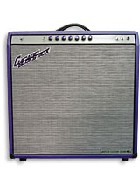

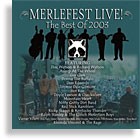
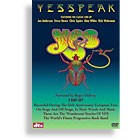
.jpg)
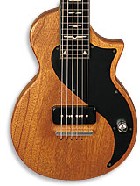
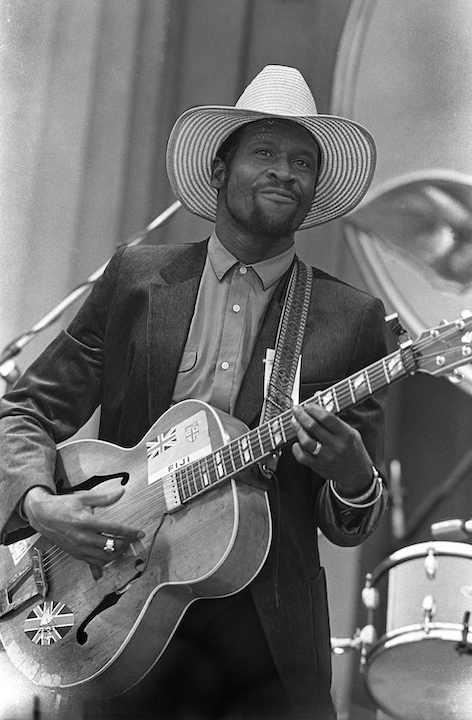
 “I’ve never heard anybody come up and tell me that the music I’m playing don’t feel good,” says Taj Mahal. And it’s hard to imagine he ever will.
“I’ve never heard anybody come up and tell me that the music I’m playing don’t feel good,” says Taj Mahal. And it’s hard to imagine he ever will.